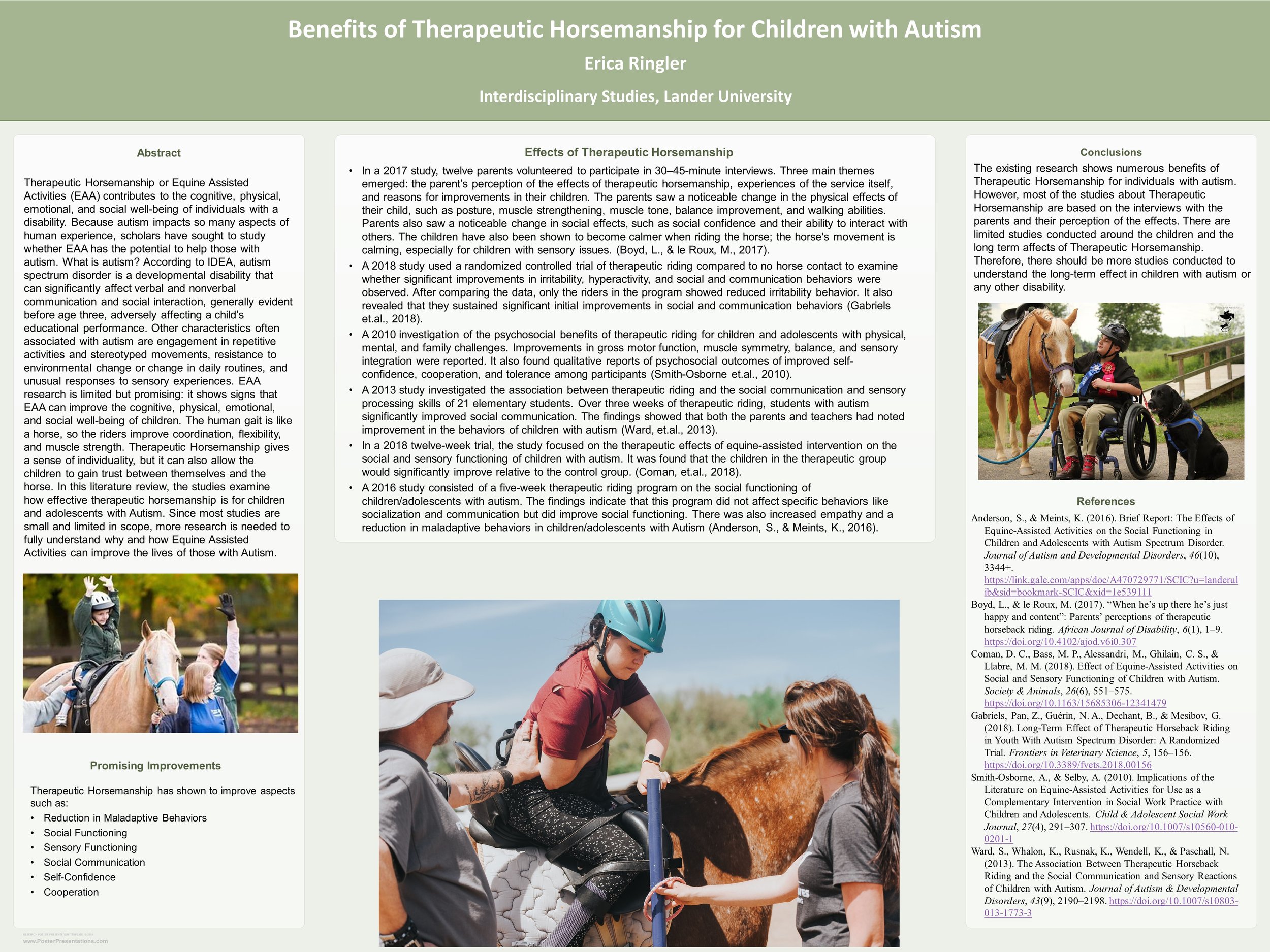Benefits of Therapeutic Horsemanship for Children with Autism
Erica Ringler
Therapeutic Horsemanship or Equine Assisted Activities (EAA) contributes to the cognitive, physical, emotional, and social well-being of individuals with a disability. Because autism impacts so many aspects of human experience, scholars have sought to study whether EAA has the potential to help those with autism. What is autism? According to IDEA, autism spectrum disorder is a developmental disability that can significantly affect verbal and nonverbal communication and social interaction, generally evident before age three, adversely affecting a child’s educational performance. Other characteristics often associated with autism are engagement in repetitive activities and stereotyped movements, resistance to environmental change or change in daily routines, and unusual responses to sensory experiences. EAA research is limited but promising: it shows signs that EAA can improve the cognitive, physical, emotional, and social well-being of children. The human gait is like a horse, so the riders improve coordination, flexibility, and muscle strength. Therapeutic Horsemanship gives a sense of individuality, but it can also allow the children to gain trust between themselves and the horse. In this literature review, the studies examine how effective therapeutic horsemanship is for children and adolescents with Autism. Since most studies are small and limited in scope, more research is needed to fully understand why and how Equine Assisted Activities can improve the lives of those with autism.
Erica Ringler graduated in May 2023 with a BS in Interdisciplinary Studies. Her area of focus was Teaching-Learning for Diverse Elementary Students, and she was a member of the Lander equestrian team.
